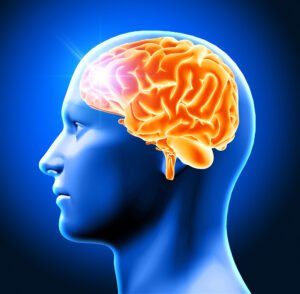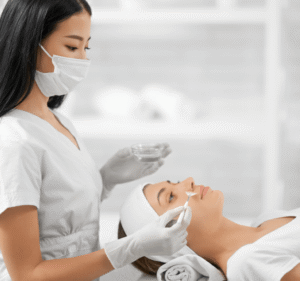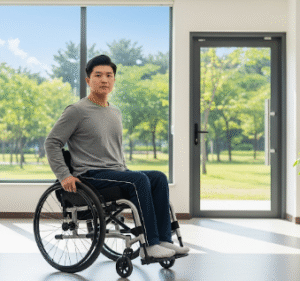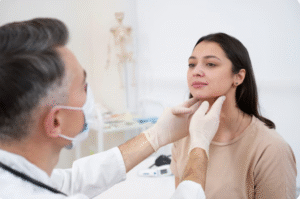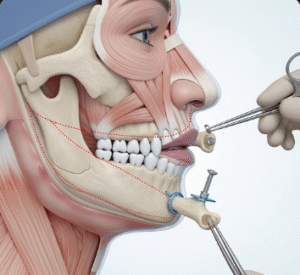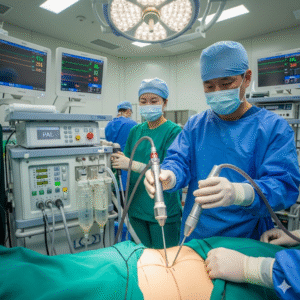What it is
→ Leg laser hair removal (LHR) is a cosmetic dermatology treatment that uses concentrated laser light to permanently reduce or eliminate unwanted hair growth on the legs.
→ The laser targets the melanin pigment in hair follicles, heating and damaging them to stop or slow regrowth.
→ Both full-leg LHR (thighs + lower legs) and half-leg LHR (either thighs or calves) are popular treatment options.
→ In Korea, leg LHR is among the most requested procedures because it provides long-lasting smoothness, convenience, and improved aesthetics, especially in a culture that values clear, hair-free skin.
Why it’s done
→ Leg LHR is chosen for:
- Cosmetic appeal → long-term smooth legs without stubble or shadowing.
- Convenience → eliminates the need for frequent shaving or waxing.
- Skin comfort → reduces ingrown hairs, razor burns, and irritation.
- Confidence boost → smoother skin for wearing skirts, shorts, or swimwear.
- Medical benefits → useful for patients with folliculitis or excessive hair growth (hirsutism).
→ It is especially popular among women seeking permanent grooming solutions and men who want reduced hair density on the legs.
Alternatives
→ Alternatives to leg LHR include:
- Shaving → quick but requires frequent upkeep; regrowth is visible within days.
- Waxing or sugaring → longer-lasting (3–4 weeks) but painful and may cause ingrown hairs.
- Depilatory creams → dissolve hair at the surface, but can irritate large areas like legs.
- Electrolysis → permanent but too slow and impractical for large body areas.
- Bleaching → lightens hair rather than removing it, temporary cosmetic fix.
→ While these methods help short-term, none offer the long-term smoothness and efficiency of LHR.
Preparation
→ Before leg LHR, patients should:
- Shave the legs 24–48 hours before treatment (roots must remain under the skin).
- Avoid waxing, plucking, or threading for at least 4–6 weeks.
- Keep skin clean → no lotions, creams, or body oils on treatment day.
- Avoid tanning or sunburn for 2–4 weeks before.
- Stop strong skincare products (like acids or retinoids) on legs 3–5 days before.
- Wear loose clothing to the session for comfort afterward.
→ Photosensitive medications should also be disclosed to the provider.
How it’s Done
→ A leg LHR session typically includes:
- Cleansing → the legs are cleaned and prepped.
- Protective eyewear → provided to both patient and practitioner.
- Laser treatment → laser pulses are delivered across the thighs and/or lower legs, targeting follicles.
- Cooling systems → modern Korean lasers use chilled tips or cold air to reduce discomfort.
- Duration → full legs may take 45–60 minutes; half legs 20–30 minutes.
- Aftercare → soothing gels or creams are applied immediately after.
→ For best results, 6–8 sessions spaced 4–8 weeks apart are typically needed, as leg hair grows in cycles.
Recovery
→ Recovery is generally mild:
- Immediate effects → redness, slight swelling, or warmth (like a mild sunburn).
- 1–3 days → skin usually returns to normal.
- Weeks later → treated hairs begin to shed, leaving smoother legs.
→ Aftercare recommendations include:
- Avoid hot showers, saunas, swimming, or heavy exercise for 24–48 hours.
- Use soothing gels (aloe vera, panthenol) if irritation occurs.
- Apply broad-spectrum sunscreen on exposed legs daily.
- Wear loose clothing to reduce friction during the first 24 hours.
→ Most patients resume normal activities immediately after the session.
Complications
→ Leg LHR is safe when done professionally, but possible side effects include:
- Temporary redness, itching, or swelling.
- Hyperpigmentation or hypopigmentation if sun exposure occurs post-treatment.
- Mild burns or blisters (rare with modern devices).
- Ingrown hairs → rare, and usually improved after multiple sessions.
- Paradoxical hypertrichosis → very rare condition where fine nearby hair thickens.
→ Risks are minimized with modern Korean devices and skilled dermatologists.
Treatment options in Korea
→ Korea is one of the best places for leg laser hair removal, with its advanced dermatology infrastructure and beauty culture.
- High-tech devices → Alexandrite, diode, and Nd:YAG lasers are used for different skin and hair types.
- Efficient treatment → clinics offer quick, large-area coverage with advanced laser heads.
- Pain minimization → built-in cooling systems and numbing gels reduce discomfort.
- Cosmetic integration → LHR is often combined with skin whitening, brightening, or rejuvenation treatments for smooth, even-toned legs.
- Hygiene focus → strict sterilization protocols and patient privacy are maintained.
- International patient support → Seoul and Busan clinics offer English-speaking staff and packages for medical tourists.
→ With cutting-edge laser systems, skilled practitioners, and aesthetic precision, Korea delivers world-class results in leg LHR.





